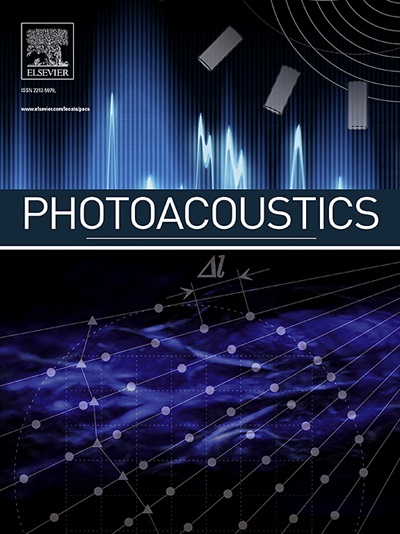Efficient implementations of a Born Series for computing photoacoustic field from a collection of erythrocytes
IF 7.1
1区 医学
Q1 ENGINEERING, BIOMEDICAL
引用次数: 0
Abstract
Numerical implementation of the Born series procedure is a computationally expensive task. Various computational strategies have been adopted and tested in this work for fast execution of the convergent Born series (CBS) algorithm for solving inhomogeneous Helmholtz equation in the context of biomedical photoacoustics (PAs). The PA field estimated by the CBS method for a solid circular disk approximating a red blood cell exhibits excellent agreement with the analytical result. It is observed that PA pressure map for a collection of red blood cells (mimicking blood) retains the signature of multiple scattering of acoustic waves by the acoustically inhomogeneous PA sources. The developed numerical tool realizing the CBS algorithm compatible with systems having multiple graphics processing units can be utilized further for accurate and fast estimation of the PA field for large tissue media.
从红细胞集合中计算光声场的博恩数列的高效实现
波恩级数过程的数值实现是一项计算代价昂贵的任务。为了在生物医学光声学(PAs)背景下求解非齐次亥姆霍兹方程的收敛Born级数(CBS)算法的快速执行,本工作采用了各种计算策略并进行了测试。用CBS法对近似红细胞的实心圆盘估计的PA场与分析结果具有很好的一致性。观察到红细胞(模拟血液)的声压图保留了声学不均匀声压源对声波多次散射的特征。所开发的实现CBS算法的数值工具可与具有多个图形处理单元的系统兼容,可进一步用于大型组织介质的PA场的准确和快速估计。
本文章由计算机程序翻译,如有差异,请以英文原文为准。
求助全文
约1分钟内获得全文
求助全文
来源期刊

Photoacoustics
Physics and Astronomy-Atomic and Molecular Physics, and Optics
CiteScore
11.40
自引率
16.50%
发文量
96
审稿时长
53 days
期刊介绍:
The open access Photoacoustics journal (PACS) aims to publish original research and review contributions in the field of photoacoustics-optoacoustics-thermoacoustics. This field utilizes acoustical and ultrasonic phenomena excited by electromagnetic radiation for the detection, visualization, and characterization of various materials and biological tissues, including living organisms.
Recent advancements in laser technologies, ultrasound detection approaches, inverse theory, and fast reconstruction algorithms have greatly supported the rapid progress in this field. The unique contrast provided by molecular absorption in photoacoustic-optoacoustic-thermoacoustic methods has allowed for addressing unmet biological and medical needs such as pre-clinical research, clinical imaging of vasculature, tissue and disease physiology, drug efficacy, surgery guidance, and therapy monitoring.
Applications of this field encompass a wide range of medical imaging and sensing applications, including cancer, vascular diseases, brain neurophysiology, ophthalmology, and diabetes. Moreover, photoacoustics-optoacoustics-thermoacoustics is a multidisciplinary field, with contributions from chemistry and nanotechnology, where novel materials such as biodegradable nanoparticles, organic dyes, targeted agents, theranostic probes, and genetically expressed markers are being actively developed.
These advanced materials have significantly improved the signal-to-noise ratio and tissue contrast in photoacoustic methods.
 求助内容:
求助内容: 应助结果提醒方式:
应助结果提醒方式:


